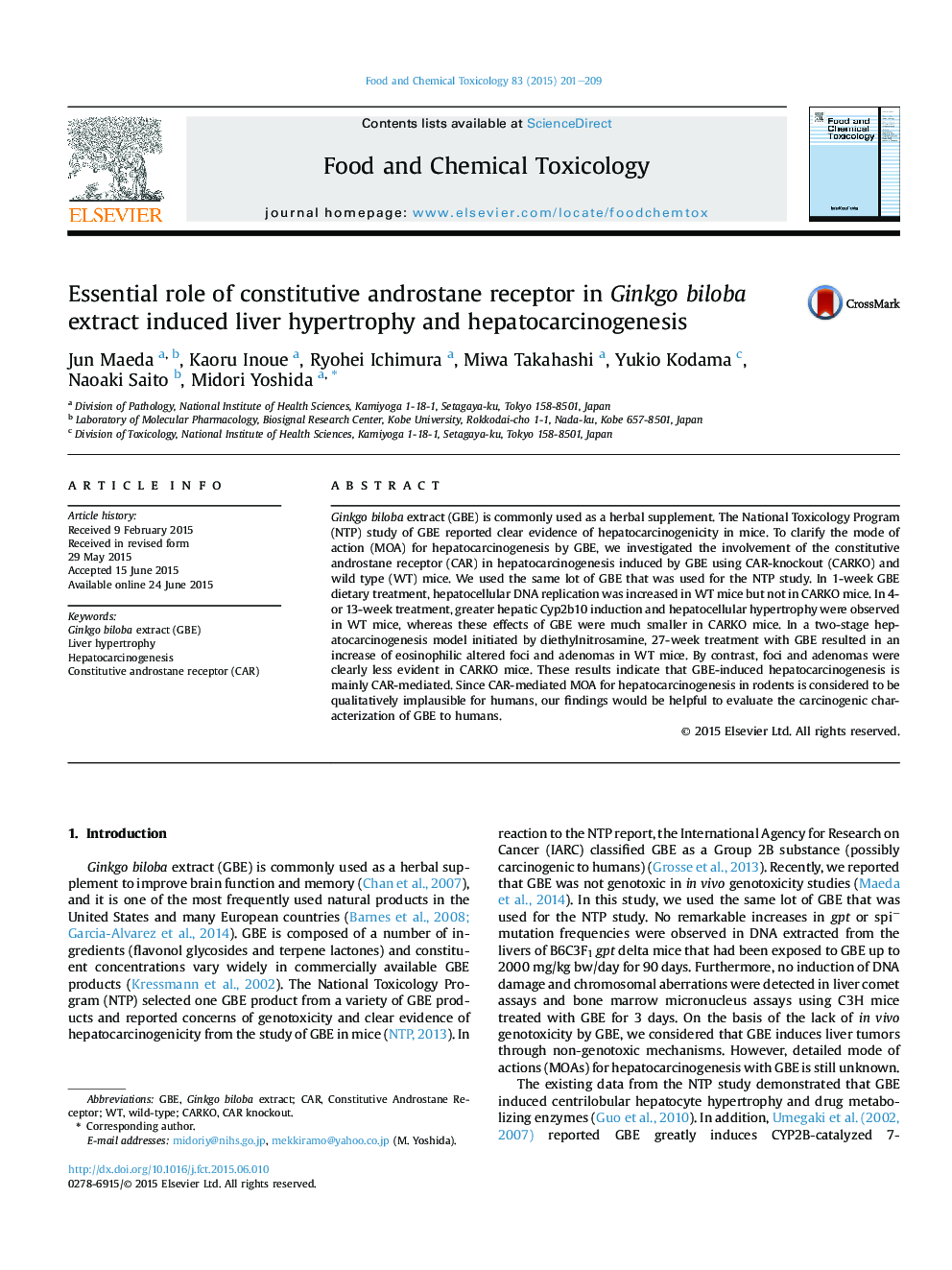| Article ID | Journal | Published Year | Pages | File Type |
|---|---|---|---|---|
| 5849720 | Food and Chemical Toxicology | 2015 | 9 Pages |
Abstract
Ginkgo biloba extract (GBE) is commonly used as a herbal supplement. The National Toxicology Program (NTP) study of GBE reported clear evidence of hepatocarcinogenicity in mice. To clarify the mode of action (MOA) for hepatocarcinogenesis by GBE, we investigated the involvement of the constitutive androstane receptor (CAR) in hepatocarcinogenesis induced by GBE using CAR-knockout (CARKO) and wild type (WT) mice. We used the same lot of GBE that was used for the NTP study. In 1-week GBE dietary treatment, hepatocellular DNA replication was increased in WT mice but not in CARKO mice. In 4- or 13-week treatment, greater hepatic Cyp2b10 induction and hepatocellular hypertrophy were observed in WT mice, whereas these effects of GBE were much smaller in CARKO mice. In a two-stage hepatocarcinogenesis model initiated by diethylnitrosamine, 27-week treatment with GBE resulted in an increase of eosinophilic altered foci and adenomas in WT mice. By contrast, foci and adenomas were clearly less evident in CARKO mice. These results indicate that GBE-induced hepatocarcinogenesis is mainly CAR-mediated. Since CAR-mediated MOA for hepatocarcinogenesis in rodents is considered to be qualitatively implausible for humans, our findings would be helpful to evaluate the carcinogenic characterization of GBE to humans.
Keywords
Related Topics
Life Sciences
Agricultural and Biological Sciences
Food Science
Authors
Jun Maeda, Kaoru Inoue, Ryohei Ichimura, Miwa Takahashi, Yukio Kodama, Naoaki Saito, Midori Yoshida,
